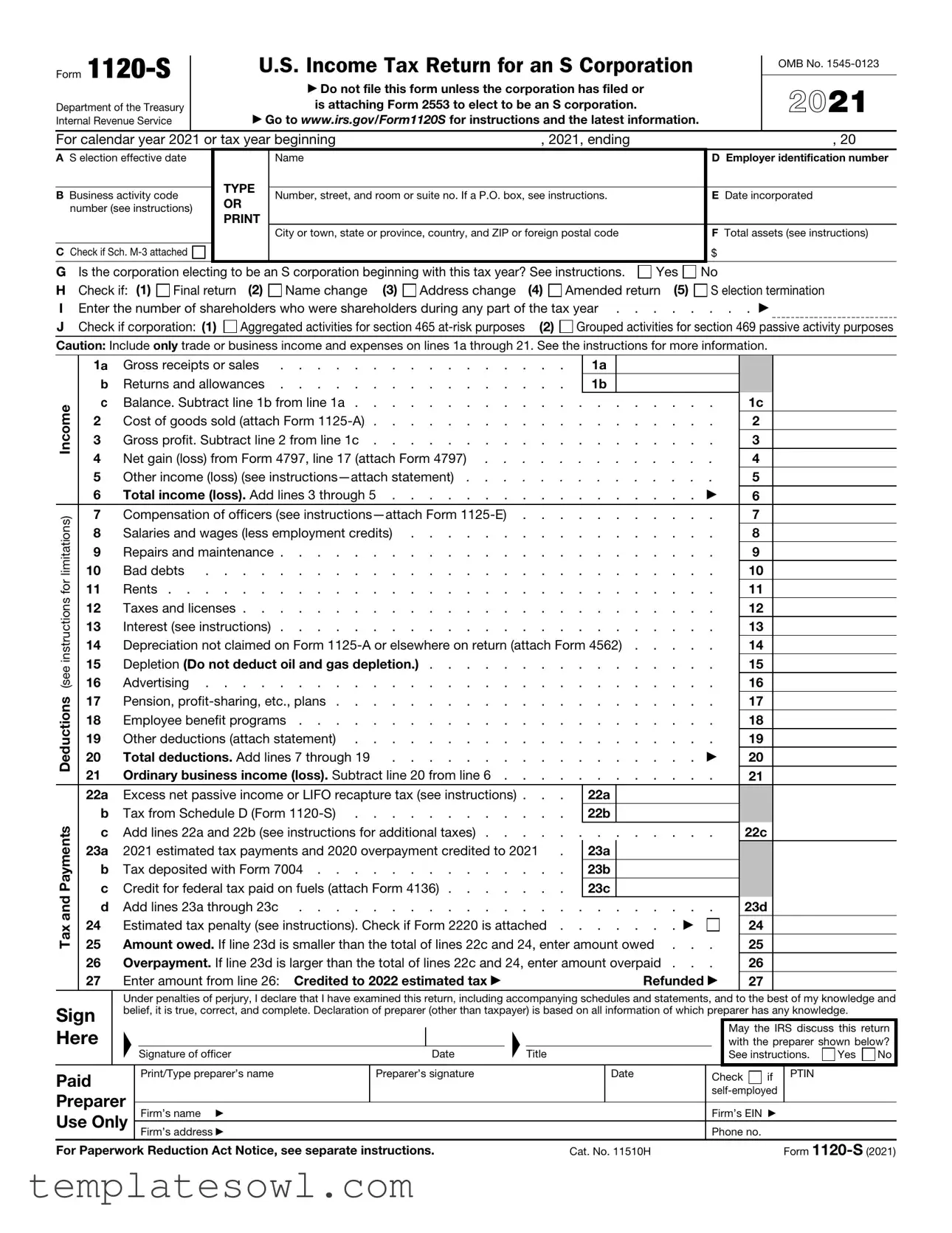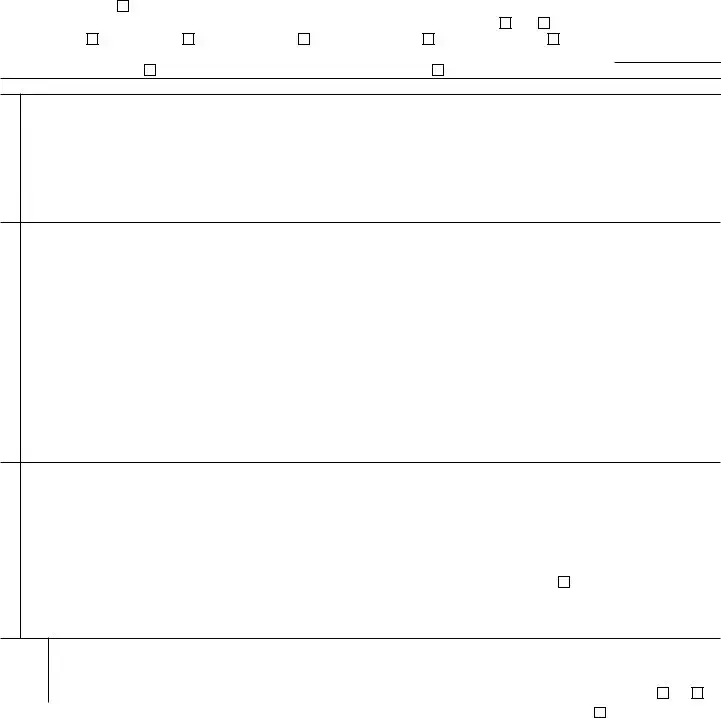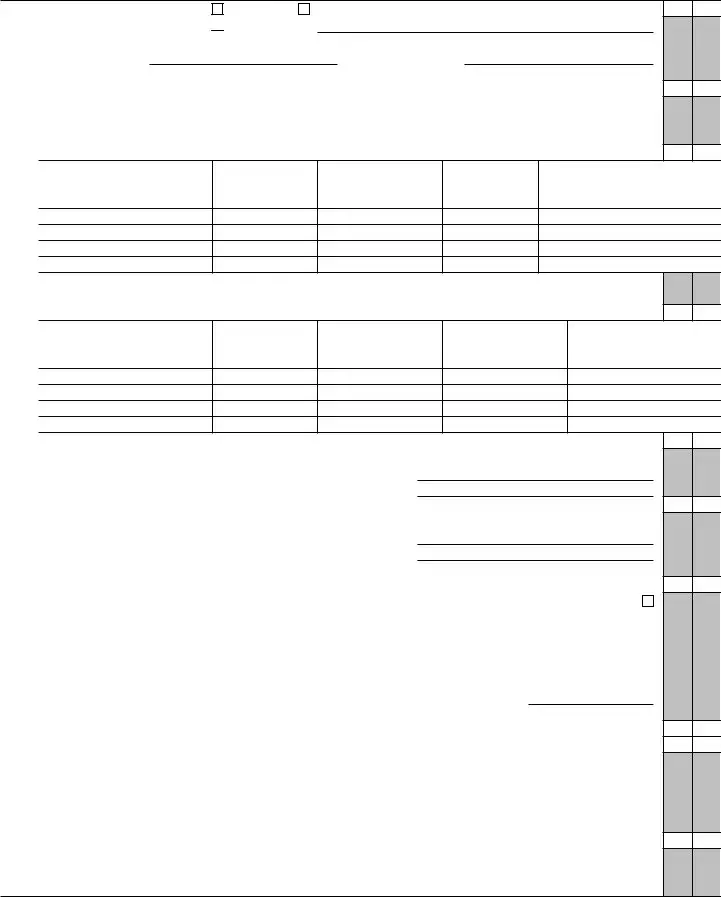1 Check accounting method: a |
Cash |
b |
Accrual |
c
 Other (specify) ▶
Other (specify) ▶
2 See the instructions and enter the:
a Business activity ▶ |
b Product or service ▶ |
3At any time during the tax year, was any shareholder of the corporation a disregarded entity, a trust, an estate, or a nominee or similar person? If “Yes,” attach Schedule B-1, Information on Certain Shareholders of an S Corporation . .
4At the end of the tax year, did the corporation:
aOwn directly 20% or more, or own, directly or indirectly, 50% or more of the total stock issued and outstanding of any foreign or domestic corporation? For rules of constructive ownership, see instructions. If “Yes,” complete (i) through (v)
below . . . . . . . . . . . . . . . . . . . . . . . . . . . . . . . . . . . .
bOwn directly an interest of 20% or more, or own, directly or indirectly, an interest of 50% or more in the profit, loss, or capital in any foreign or domestic partnership (including an entity treated as a partnership) or in the beneficial interest of a trust? For rules of constructive ownership, see instructions. If “Yes,” complete (i) through (v) below . . . . . . .
5a At the end of the tax year, did the corporation have any outstanding shares of restricted stock? . . . . . . . .
If “Yes,” complete lines (i) and (ii) below.
(i) |
Total shares of restricted stock |
▶ |
(ii) |
Total shares of non-restricted stock |
▶ |
bAt the end of the tax year, did the corporation have any outstanding stock options, warrants, or similar instruments? . If “Yes,” complete lines (i) and (ii) below.
(i) |
Total shares of stock outstanding at the end of the tax year |
. ▶ |
(ii)Total shares of stock outstanding if all instruments were executed ▶
6Has this corporation filed, or is it required to file, Form 8918, Material Advisor Disclosure Statement, to provide
|
information on any reportable transaction? |
. . . . . . . . . . . . . . . . . . . . . . . . |
7 |
Check this box if the corporation issued publicly offered debt instruments with original issue discount . . . . ▶ |
|
If checked, the corporation may have to file Form 8281, Information Return for Publicly Offered Original Issue Discount |
|
Instruments. |
|
8If the corporation (a) was a C corporation before it elected to be an S corporation or the corporation acquired an asset with a basis determined by reference to the basis of the asset (or the basis of any other property) in the hands of a C corporation, and
(b) has net unrealized built-in gain in excess of the net recognized built-in gain from prior years, enter the net unrealized built-in
gain reduced by net recognized built-in gain from prior years. See instructions . . . . . . ▶ $
9Did the corporation have an election under section 163(j) for any real property trade or business or any farming business
in effect during the tax year? See instructions . . . . . . . . . . . . . . . . . . . . . . . .
10 Does the corporation satisfy one or more of the following? See instructions . . . . . . . . . . . . . .
aThe corporation owns a pass-through entity with current, or prior year carryover, excess business interest expense.
bThe corporation’s aggregate average annual gross receipts (determined under section 448(c)) for the 3 tax years preceding the current tax year are more than $26 million and the corporation has business interest expense.
cThe corporation is a tax shelter and the corporation has business interest expense.
If “Yes,” complete and attach Form 8990.
11 Does the corporation satisfy both of the following conditions? . . . . . . . . . . . . . . . . . .
aThe corporation’s total receipts (see instructions) for the tax year were less than $250,000.
bThe corporation’s total assets at the end of the tax year were less than $250,000. If “Yes,” the corporation is not required to complete Schedules L and M-1.
Form 1120-S (2021)




 Other (specify)
Other (specify) 

